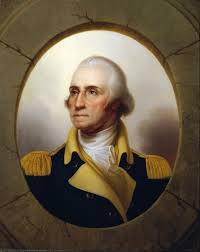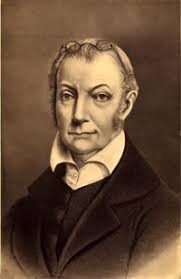What Mansion Would that Be?

To be more specific, the Morris mansion, or as it was later known, the Morris-Jumel mansion. Readers of
The Patriot Spy might recall the mansion provided the venue for a secret planning session between Jeremiah Creed and General George Washington. And in fact, Washington made the Morris mansion his headquarters in the fall of 1776. In
The Patriot Spy, it served as Continental Army headquarters during the time of the Battle of Harlem Heights.
 |
| A National Landmark: the Morris-Jumel Mansion |
Who Built it?
The house was built eleven years before the revolution, in 1765, by British Colonel Roger Morris and his American wife, Mary Philipse. Known as Mount Morris, this northern Manhattan estate stretched from the Harlem to the Hudson Rivers and covered more than 130 acres. Morris was the nephew of a prominent architect and built the mansion in the Palladian style of architecture. Features include a monumental portico supported by grand Tuscan columns and a large, two-story octagonal addition at the rear. Because they were loyal to the crown, the Morrises were eventually forced to return to England. The Continentals often used the abandoned (or not) homes of Loyalists as headquarters, etc. The British did the same to the Patriots. In this case, the home was large enough to provide room for staff activities and a place for the commander in chief to live.
Why Headquarters?
 |
Washington recognized the advantages
of establishing a headquarters on Morris Hill |
The location was ideal as it stood on the high ground of the heights where Washington had (vainly) hoped to destroy a British attack
a la Bunker (Breed's) Hill. The Battle of Harlem heights turned out a draw at best. But the location afforded access to the lower island should the opportunity present itself for a counterattack. And it covered the only American line of retreat - the King's Bridge. With views of the Harlem River, the Bronx, and Long Island Sound to the east, New York City and the harbor to the south, and the Hudson River and Jersey Palisades to the west, Mount Morris proved to be a superb strategic military headquarters. Shortly after the Battle of Harlem Heights, Washington, and his troops left the mansion, and, for a time, it was occupied by British and Hessian forces.
Post Bellum Shenanigans
 |
| Eliza Jumel |
In the summer of 1790, Washington returned to the Mansion and dined with the members of his cabinet. Among those at the table were Thomas Jefferson, Alexander Hamilton, John Adams, John Quincy Adams, and Henry Knox. However, the mansion rekindled the public's interest (and ours) because of another (notorious) First Patriot. In 1810, the mansion was bought by a wealthy French wine merchant Stephen Jumel. Hence the name change to Morris-Jumel mansion. Jumel and his American wife, Eliza, purchased the
mansion, and spared no expense refurbishing it. In 1828, they returned from Paris with crates of furniture and paintings, much of which they claimed had belonged to Napoleon. In 1832, Stephen died, ostensibly of "natural causes." He fell on a pitchfork and bled out. But there was speculation that Eliza had a role in the death as she had carried on a torrid affair with the now defamed former Vice President of the US and killer of Alexander Hamilton, Aaron Burr. A year after Stephen Jumel died in 1832, Eliza married Burr. But the union ended after three years in divorce as Burr wanted only her money, most of which he managed to spend. Burr died in near poverty. Eliza became a recluse, and the once renowned beauty turned into a frightening sight with unkempt hair, false teeth, and dirty clothing. Although the rumors were she went mad, she certainly had dementia and drove away even her closest relatives and friends. She lived alone in the house until her death in 1865.
Post Shenanigans Hauntings?
 |
Aaron Burr around the time of
his infamous seduction of Eliza |
A stately old home, soldiers, sex, murder, and madness combine in a toxic brew made for tales of ghost sightings and hauntings. The mansion is now widely regarded as not only the oldest house in New York City but the oldest
haunted house in the city. A tour of the haunted houses of New York would be incomplete without a trip to Harlem. Many people, including curators as well as touring visitors, have had sightings over the years. These run the gamut from Eliza, Stephen, and Aaron, to Revolutionary War soldiers and servants. One of the latter a jilted maidservant. I first heard of the Morris-Jumel mansion as a boy. A friend of my father (who later became a History Professor) had visited the mansion and regaled us with tales of the sighting of ghosts - civilian and military. He insisted that some sightings were done by inner-city youth touring the mansion with their schools and how the described "soldiers walking through the walls." He went on to insist that they described some of the uniforms accurately and that they had no knowledge of 18th-century military or civilian dress. The New York City Parks
Department now owns the mansion and it is open for visitors, living or not.





